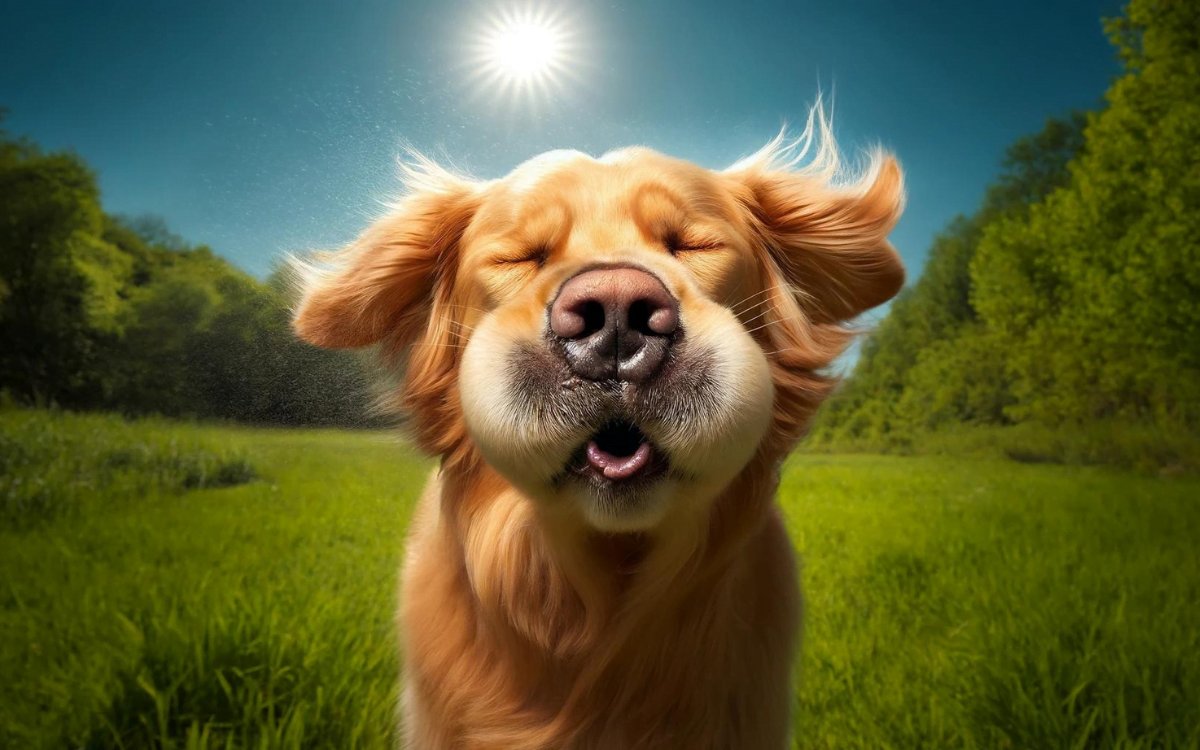While reverse sneezing is usually harmless, witnessing your dog experience it can be a frightening and confusing experience for pet owners. This article aims to provide clear and informative content about reverse sneezing in dogs. We’ll discuss the symptoms, causes, and treatment options to help you understand this common phenomenon and alleviate any anxieties you might have.
What is Reverse Sneezing in Dogs?
Reverse sneezing, also known as paroxysmal respiration, is a brief and startling episode where a dog rapidly inhaling air through their nose. It can sound like snorting, honking, or gagging, and often involves the dog extending their neck and elbows outward. While the experience can be alarming for pet owners, reverse sneezing is usually a harmless reflex and doesn’t require any medical intervention.
How Common is Reverse Sneezing in Dogs?
Reverse sneezing is a relatively common occurrence in dogs of all breeds and ages.
Is Reverse Sneezing Serious?
In most cases, reverse sneezing is a benign reflex and doesn’t pose any threat to your dog’s health. The episodes typically last for only seconds and resolve on their own. However, if the episodes become frequent, prolonged, or are accompanied by other symptoms, it’s best to consult your veterinarian to rule out any underlying conditions.
What Breeds Are More Prone to Reverse Sneezing?
Small dog breeds with shorter noses (brachycephalic breeds) like Pugs, Shih Tzus, and Bulldogs may be more predisposed to reverse sneezing due to their narrow nasal passages.
Symptoms of Reverse Sneezing in Dogs
Recognizing the Signs of Reverse Sneezing
Reverse sneezing episodes typically last for short periods, usually less than a minute. During an episode, your dog might exhibit several characteristic signs:
- Rapid, forceful inhalation through the nose: This is the most prominent symptom and can sound like forceful snorting or honking.
- Noisy breathing: The rapid inhalation can create a lot of noise, often described as snorting, honking, or gagging.
- Gagging or coughing sounds: The forceful inhalation can irritate the throat and trigger gagging or coughing sounds.
- Extended posture with elbows splayed out: Some dogs will extend their neck and head forward while splaying their elbows outward during a reverse sneeze. This posture might appear uncomfortable, but it’s simply the dog trying to improve airflow.
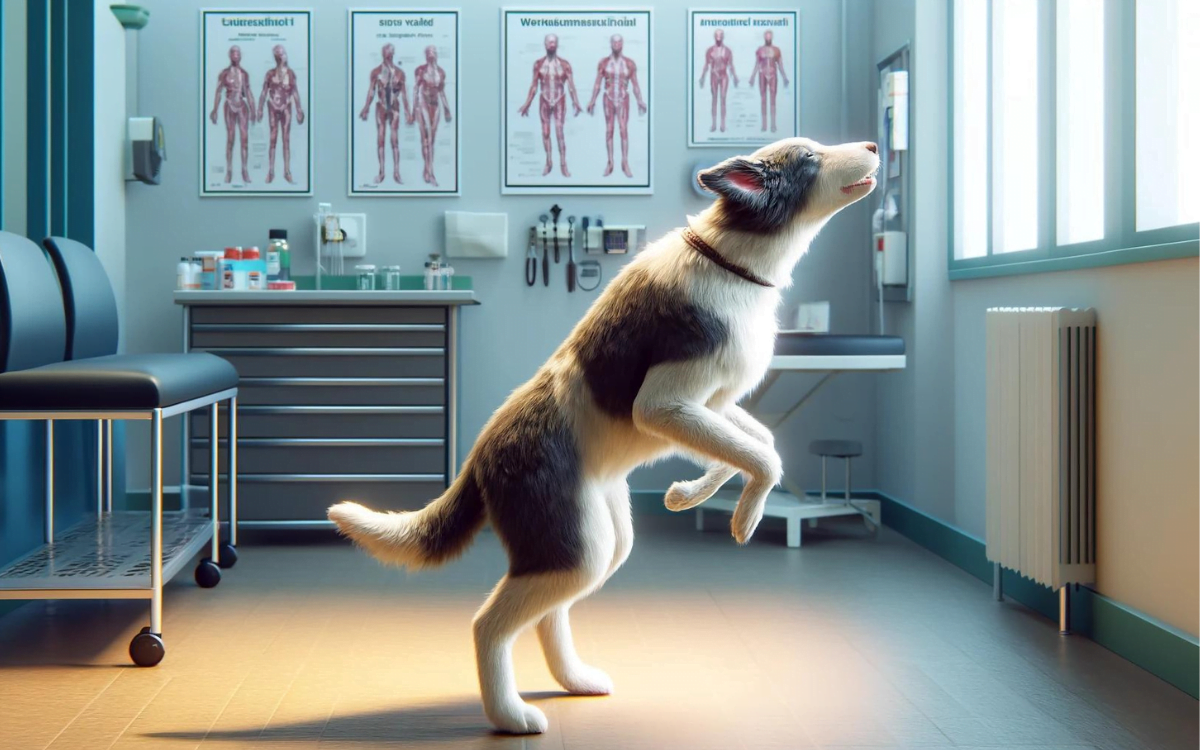
Differentiating Reverse Sneezing from Other Conditions
While the symptoms of reverse sneezing can be alarming, it’s important to differentiate it from other conditions. Here are some conditions that might mimic reverse sneezing:
- Kennel cough: This is a respiratory infection that can cause coughing, hacking, and gagging. Unlike reverse sneezing, kennel cough is often accompanied by a discharge from the nose or eyes.
- Vomiting: If your dog is trying to vomit, they might exhibit similar sounds and body positioning as reverse sneezing. However, vomiting will usually be followed by the expulsion of stomach contents.
- Tracheal collapse: This is a serious condition where the trachea (windpipe) narrows, causing difficulty breathing. You can learn more about tracheal collapse in dogs here Collapsed Trachea in Dogs: Causes, Signs, and Treatment
- Tracheal collapse can cause coughing, honking, and respiratory distress, which can be mistaken for reverse sneezing.
When to Consult a Veterinarian: If you’re unsure whether your dog is experiencing reverse sneezing or another condition, it’s always best to consult your veterinarian for a proper diagnosis.
Causes of Reverse Sneezing in Dogs
Understanding the Triggers Behind Reverse Sneezing
There are several potential causes that can trigger reverse sneezing episodes in dogs. Here, we’ll explore the most common culprits.
Environmental Irritants
Irritants in the environment can trigger the reverse sneezing reflex as your dog tries to expel them from their nasal passages. Common irritants include:
- Dust
- Pollen
- Smoke
- Perfume
- Cleaning products
When these irritants come into contact with the sensitive lining of the nose, they can cause inflammation and irritation, leading to reverse sneezing.
Allergies
Just like humans, dogs can also suffer from allergies. Inhaling allergens like pollen, dust mites, or mold spores can trigger an allergic reaction in the nose, leading to irritation and reverse sneezing.
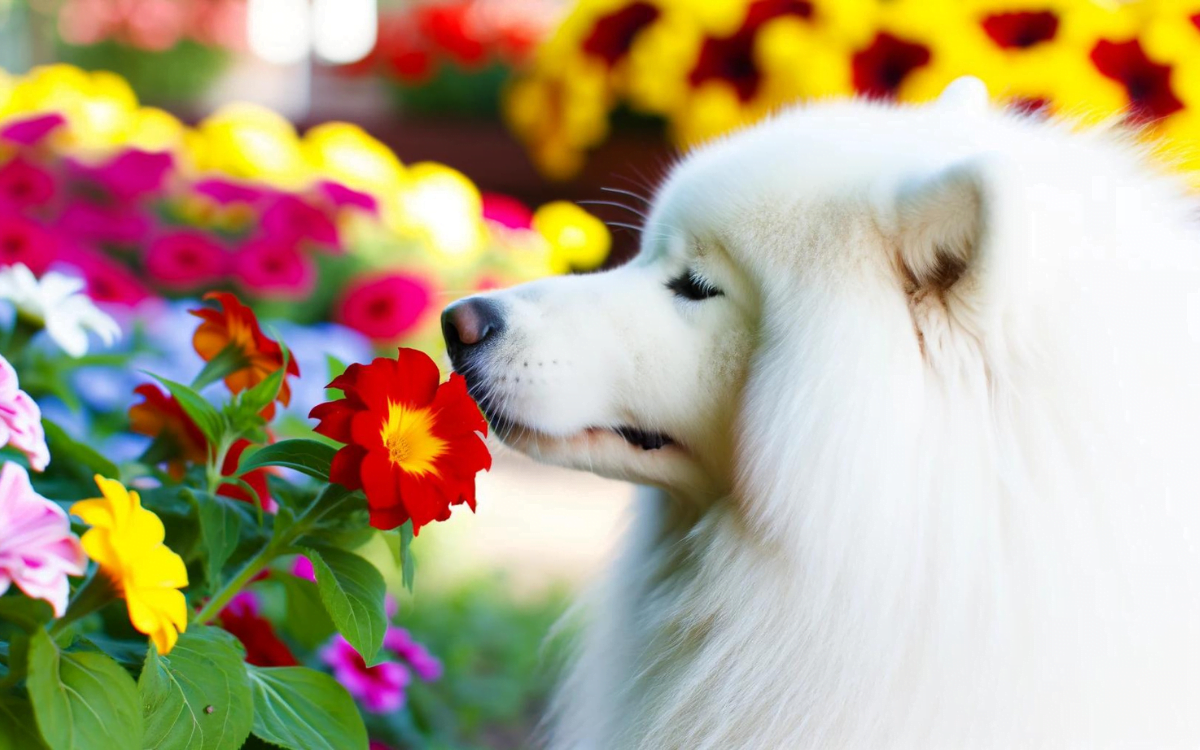
Postnasal Drip
Postnasal drip occurs when excess mucus accumulates in the back of the nasal passages and drips down the throat. This can irritate the throat and trigger reverse sneezing as the dog tries to clear the irritation. Conditions like allergies or respiratory infections can cause postnasal drip.
Excitement or Exercise
For some dogs, reverse sneezing episodes can be triggered by excitement or exercise. The increased rate of inhalation during these activities might irritate the nasal passages and lead to reverse sneezing. This is more common in brachycephalic breeds with narrow nasal passages.
Underlying Medical Conditions
In rare cases, reverse sneezing can be a sign of an underlying medical condition. While uncommon, some potential causes include:
- Nasal mites: These tiny parasites can live in the nasal passages and cause irritation, leading to reverse sneezing.
- Foreign bodies: If your dog inhales a foreign object like a blade of grass or a small toy, it can get lodged in the nasal passages and trigger reverse sneezing.
- Nasal tumors: In very rare cases, nasal tumors can irritate the nasal passages and cause reverse sneezing.
It’s important to note that reverse sneezing is usually a benign reflex and not a cause for major concern. However, if the episodes become frequent, severe, or are accompanied by other symptoms, consulting your veterinarian is crucial to rule out any underlying conditions.
Diagnosis of Reverse Sneezing in Dogs
How Veterinarians Diagnose Reverse Sneezing
In most cases, veterinarians can diagnose reverse sneezing based on the clinical signs alone. They will likely ask you to describe the episodes, including their frequency, duration, and any accompanying symptoms.
A physical examination will also be performed to check your dog’s overall health and listen for any abnormal respiratory sounds.
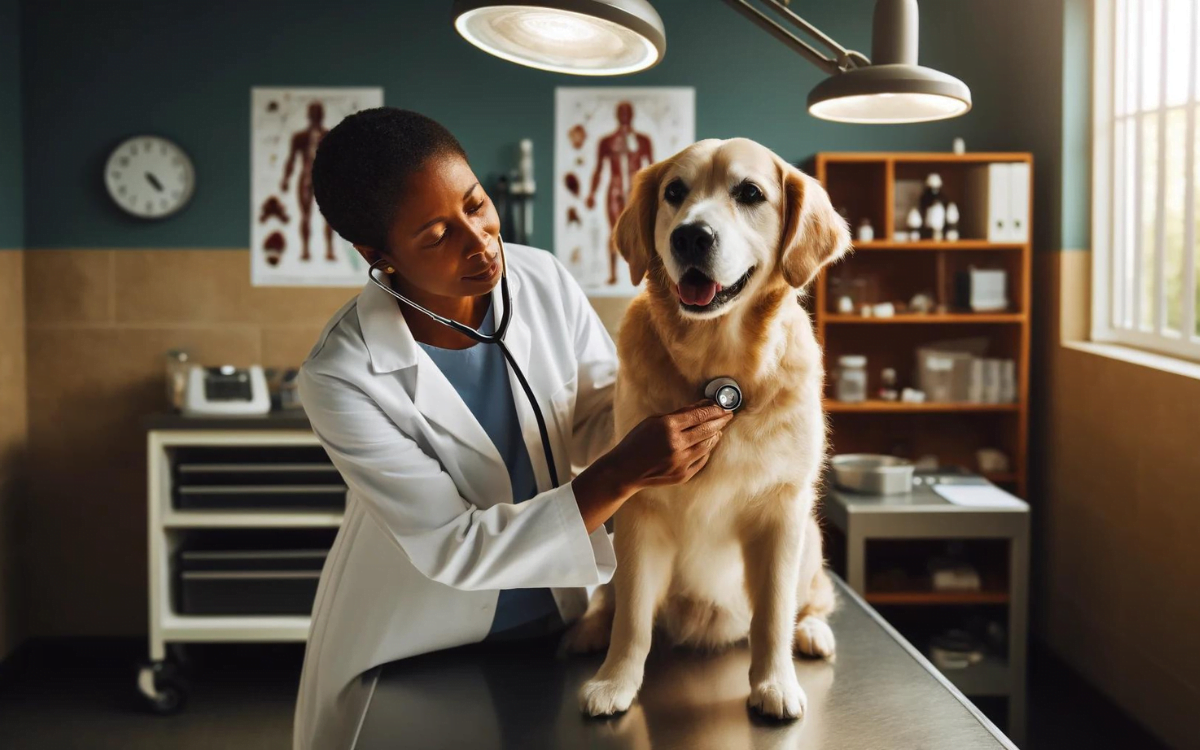
Additional Tests
While uncommon, in some cases, additional tests like X-rays or rhinoscopy might be necessary to rule out other conditions, especially if the reverse sneezing is accompanied by other symptoms or is suspected to be caused by an underlying medical condition.
X-rays can help visualize the nasal passages and trachea to identify any abnormalities. Rhinoscopy is a procedure where a veterinarian uses a small, flexible scope to examine the inside of the nose for signs of infection, foreign bodies, or tumors.
Treatment of Reverse Soothing in Dogs
- Good News: The good news is that in most cases, no treatment is necessary for reverse sneezing episodes. They are usually brief and self-resolving.
- Calming Techniques During Episodes: If your dog experiences a reverse sneeze, you can try to calm them by gently stroking their throat or covering their nostrils for a few seconds. This may help shorten the episode.
- Veterinary Intervention When Needed: If the episodes become frequent, severe, or are accompanied by other symptoms, consult your veterinarian to rule out any underlying conditions.
- A cool mist humidifier filling a room, potentially helpful in reducing nasal irritation and lessening reverse sneezing episodes.
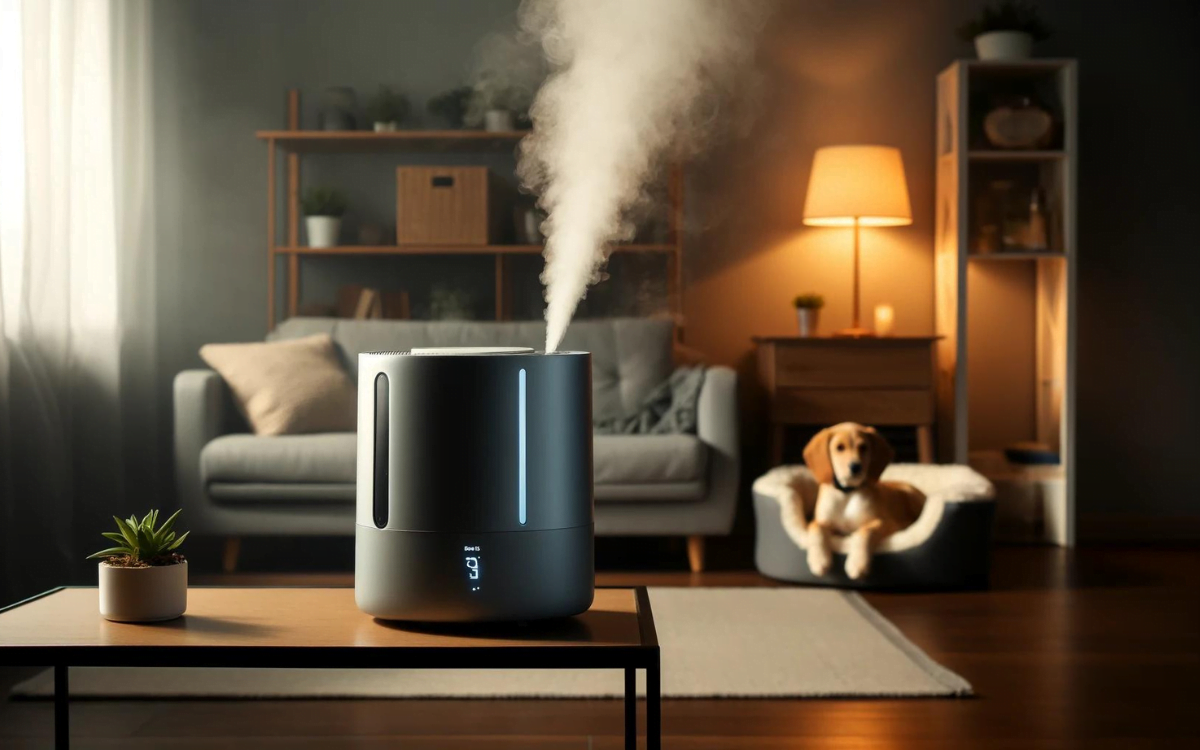
When to Worry About Reverse Sneezing in Dogs
While reverse sneezing is usually a harmless reflex, there are some situations where it warrants a visit to your veterinarian. Here’s when you should consider seeking professional advice:
Increased Frequency or Duration
If your dog’s reverse sneezing episodes become more frequent (happening several times a day) or last longer (more than a minute), it’s best to consult your veterinarian. This could indicate an underlying issue that needs to be addressed.
Difficulty Breathing
If your dog exhibits difficulty breathing during or after a reverse sneezing episode, this is a cause for concern. It could be a sign of a more serious respiratory problem like tracheal collapse or foreign object lodged in the airway.
Accompanying Symptoms
Be mindful of any other symptoms that accompany the reverse sneezing. These might include discharge from the nose or eyes, lethargy, loss of appetite, facial rubbing, or pawing at the face. These symptoms could indicate an infection, allergy, or other health issue.
Veterinarian’s Role in Complex Situations
If you’re concerned about your dog’s reverse sneezing or they exhibit any of the above symptoms, your veterinarian can help diagnose the underlying cause and recommend appropriate treatment.
Veterinary Care for Reverse Sneezing in Dogs
What to Expect During a Vet Visit
If your concerns about your dog’s reverse sneezing lead you to the veterinarian, here’s what to expect:
- Consultation: The veterinarian will discuss your dog’s medical history, the frequency and duration of the episodes, and any accompanying symptoms.
- Physical Examination: A thorough physical examination will be performed to assess your dog’s overall health and listen for any abnormal respiratory sounds.
Diagnostic Tests
In some cases, depending on the veterinarian’s findings, additional diagnostic tests might be recommended to rule out underlying conditions. These tests could include:
- X-rays: X-rays of the chest can help visualize the lungs, trachea, and nasal passages to identify abnormalities like masses or foreign objects.
- Rhinoscopy: This procedure involves using a small, flexible scope to examine the inside of the nose for signs of infection, foreign bodies, or growths.
Treatment Options
The treatment plan will depend on the underlying cause identified by the veterinarian. It might involve medications like antibiotics for infections or allergy medications for allergies. In rare cases, surgery might be necessary to remove foreign objects or address anatomical abnormalities.
Conclusion
Reverse sneezing, while startling for pet owners, is a common and usually harmless reflex in dogs. Understanding the causes, symptoms, and when to seek veterinary attention can help you ensure your furry friend’s well-being.
This article explored the world of reverse sneezing in dogs. We discussed the symptoms, common causes like irritants, allergies, and excitement, and the importance of consulting a veterinarian if the episodes become frequent, prolonged, or are accompanied by other symptoms. It’s important to remember that reverse sneezing is typically a benign reflex and shouldn’t be a cause for major concern.
However, if you notice any red flags like difficulty breathing, discharge from the eyes or nose, or lethargy, consulting your veterinarian is crucial to rule out any underlying health issues.
By understanding reverse sneezing and when to seek professional help, you can ensure your dog receives the proper care and you can both enjoy a happy and healthy life together.
For further information on canine health, you can visit the website of the American Kennel Club (AKC) or consult your trusted veterinarian.
FAQ Answers:
Can reverse sneezing hurt my dog’s throat?
While the forceful inhalation during a reverse sneeze can irritate the throat, it’s usually temporary and shouldn’t cause any lasting harm. However, if your dog coughs excessively after a reverse sneeze or seems uncomfortable, consult your veterinarian.
Do certain dog breeds reverse sneeze more than others?
Yes, brachycephalic breeds with shorter noses, like Pugs, Shih Tzus, and Bulldogs, are more prone to reverse sneezing due to their narrow nasal passages.
Can reverse sneezing cause vomiting in dogs?
While both reverse sneezing and vomiting can involve forceful expulsion of air, they are different. Reverse sneezing involves inhalation through the nose, while vomiting expels stomach contents through the mouth. However, the irritation caused by reverse sneezing might sometimes trigger gagging, which can be mistaken for vomiting.
Should I medicate my dog for reverse sneezing?
In most cases, no medication is necessary for reverse sneezing episodes. However, if the episodes become frequent, severe, or are accompanied by other symptoms, consult your veterinarian to rule out any underlying conditions and determine the best course of action.
How can I tell the difference between reverse sneezing and a seizure?
Here’s a quick guide:
- Reverse Sneezing: Short, forceful inhalation through the nose, lasts seconds, dog remains conscious.
- Seizure: Loss of consciousness, muscle stiffness or jerking, loss of bladder or bowel control, can last for minutes.
If you’re unsure, err on the side of caution and consult a veterinarian immediately.
Is reverse sneezing a sign of heartworms in dogs?
No, reverse sneezing is not a symptom of heartworms. Heartworms cause coughing, fatigue, and difficulty breathing. If you suspect your dog has heartworms, consult your veterinarian for proper diagnosis and treatment.
Can I use a humidifier to help prevent reverse sneezing in my dog?
While there’s no definitive evidence, using a humidifier to add moisture to the air might help reduce irritation in the nasal passages and potentially lessen the frequency of reverse sneezing episodes. It’s worth trying, but consult your veterinarian for guidance on humidifier use and ensure it’s set to a safe level for your pet.
Are there any long-term health effects from reverse sneezing in dogs?
No, reverse sneezing itself doesn’t cause any long-term health effects. However, if it’s caused by an underlying condition that goes untreated, there could be potential health consequences. This is why consulting a veterinarian is important if the episodes become concerning.
Can reverse sneezing be a symptom of stress in dogs?
Yes, in some cases, stress or anxiety can trigger reverse sneezing in dogs. If you suspect your dog’s reverse sneezing is stress-related, identify and address the source of stress to help prevent future episodes.
Home remedies for reverse sneezing in dogs?
Some pet owners find that gently stroking their dog’s throat or briefly covering their nostrils during a reverse sneeze episode can help shorten it. However, a veterinarian’s advice is crucial to ensure these methods are safe

Healthy dogs mean happy dogs, and that makes me happy! I’m here to share all the tips for keeping your best furry friend in top shape, from puppyhood to their golden years.

